We study population and communities to understand how and why they are changing and the actions that could foster abundant wildlife and healthy ecosystems for all to enjoy. We use statistical tools, field ecology, population genomics, and mathematical modeling to understand general patterns that extend across larger spatial scales, deeper in time, and across a wider range of species than would be possible with more traditional techniques. A sampling of our projects is below.
How do species and communities respond to climate variation?
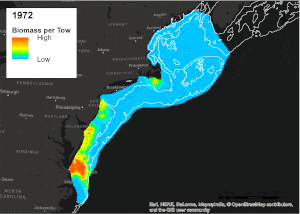
Climate change and variability is not just an increase in temperature or change in environmental conditions; it’s also a velocity across the seascape as species’ preferred conditions move to new locations. While it’s clear that species distributions shift as climates change, our understanding of the mechanisms, causes, and consequences remain limited. A major challenge is to challenges us to integrate physiological, ecological, and evolutionary processes together to gain a predictive understanding of species responses. Can all species keep up with rapid climate velocities? How does climate interact with other factors, like habitat, food web dynamics, and evolution? How do individual species responses scale up to changing community composition? Why do some communities change composition quickly and others slowly? To date, we’ve focused largely on continental shelf species, building large databases of observations like FISHGLOB against which we can test broad hypotheses, as well as developing case studies and mathematical models to explore dynamics in more detail. Current topics of focus include marine heatwaves, dynamic range models and the mechanisms underlying species range shifts, and temporal turnover in species composition.
Temporal genomics in a changing world
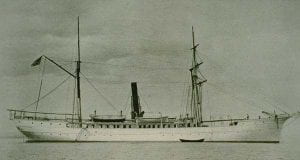
Evolution has received little attention in the context of contemporary global change, and yet it has the potential to be an exceptionally important and widespread mechanism by which species cope. Through the process of evolutionary rescue, for example, adaptive evolution can restore positive growth to declining populations and help avoid extinction during rapid environmental change. However, the extent to which evolutionary rescue is common across species in the wild and the genomic architecture that underlies rapid adaptive evolution remain unknown.
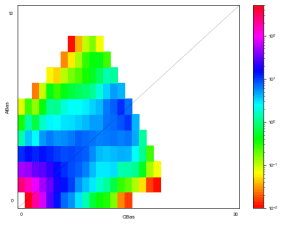
There are limits to what we can infer about the interactions of evolutionary and ecological processes from contemporary genomic patterns, however. Instead, we use natural history collections and full- or sub-genome DNA sequencing from historical specimens to, in effect, rewind time and study evolution as it happened. Projects focus on Atlantic cod (Gadus morhua) that were intensively fished and now mature at younger ages and smaller sizes, coastal fishes of the Philippines that have experienced substantial habitat destruction over the past century, and kelps that have exerperienced intensive marine heatwaves. Some of our research has revealed selection coefficients that are among the highest ever detected in the wild. The Albatross Re-Collection Project in the Philippines is in collaboration with the Smithsonian Institution and their collection of fishes from the Albatross expedition 1907-1910 (one of the largest fish collections in the world). The fishes were stored in sugar cane distillate (effectively, high proof rum) and remain suitable for whole genome sequencing. Our temporal and spatial genomic research on giant kelp (Macrocystis pyrifera) is in collaboration with the Santa Barbara Coastal LTER and the California Department of Fish and Wildlife. We maintain a Historical Genomics Laboratory with HEPA-filtered clean environments for preparing genomic libraries from degraded tissue samples.
Eco-evolutionary theory for global change
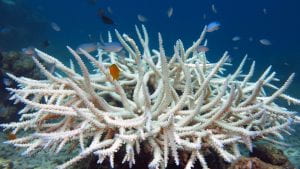
Evolutionary and ecological dynamics occur on the same timescales and interact with each other, but it remains unclear how these feedbacks affect species’ ability to cope with global change. Considering evolutionary processes, for example, often reverses our expectations for population persistence and effective conservation strategies in the face of global change. Dispersal across environmental gradients is a key process, and so understanding eco-evolutionary dynamics across heterogeneous landscapes is a particular interest of ours. We develop mathematical theory and simulations to develop intuition and generalizable knowledge. We often use corals and climate change as a motivating example. Corals live in a thermally heterogeneous landscape and gene flow readily crosses between hot and cold microclimates, which may play a key role in allowing some populations to adapt to changing ocean conditions.
Population persistence across space and time
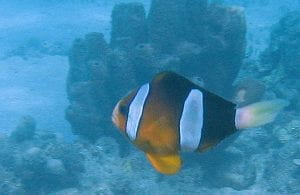 The effects of global change are ultimately mediated by local population dynamics, which depend on the balance between reproduction, survival, and dispersal. Ecologists typically examine these issues as metapopulation dynamics, and yet marine species present a fascinating challenge to classical metapopulation theory based on the balance of extinctions and recolonizations. Extinctions in the ocean are rare, even though—paradoxically—many marine subpopulations appear unable to persist on their own (i.e., without immigration). Mathematical models suggest how this might occur: network effects through the abundant exchange of offspring that balance the losses from mortality. This theory, however, remains poorly tested in the natural world.
The effects of global change are ultimately mediated by local population dynamics, which depend on the balance between reproduction, survival, and dispersal. Ecologists typically examine these issues as metapopulation dynamics, and yet marine species present a fascinating challenge to classical metapopulation theory based on the balance of extinctions and recolonizations. Extinctions in the ocean are rare, even though—paradoxically—many marine subpopulations appear unable to persist on their own (i.e., without immigration). Mathematical models suggest how this might occur: network effects through the abundant exchange of offspring that balance the losses from mortality. This theory, however, remains poorly tested in the natural world.
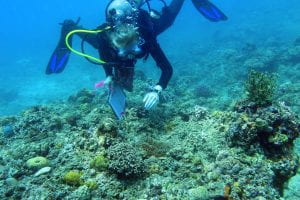
We use clownfish (Amphiprion species) in the Philippines as a model system. This is an ideal system because adults are sedentary and can be tagged and then followed from year to year. We use genetic markers to identify parent-offspring pairs and hence offspring dispersal pathways, model ocean currents to understand its role in dispersal, measure survival through mark-recapture, and take field observations to quantify lifetime reproduction. Initial results indicate that an extensive collection of local populations in our study region produce sufficient offspring for self-replacement, but dispersal patterns make them nonetheless reliant on immigration. We are now testing whether spatial or temporal heterogeneity in demographic rates is sufficient to allow persistence.
Comparative population dynamics
Why do some populations decline, others fluctuate, and others stay stable? An important goal is to identify key traits and environmental drivers associated with these outcomes. For example, patterns of extinction risk on land usually follow a classic pattern: organisms with large body size, slow growth, and small ranges are the most vulnerable. The oceans have long been assumed to follow similar patterns, but our work has revealed that patterns are nearly the opposite: small, fast-growing species are in fact most likely to decline to low abundance in the sea. The fundamental but surprising differences between land and sea reflect substantial differences in the history of human influence, with habitat transformation driving much of the extinction risk on land, while predation from humans remains a primary driver in the ocean. Ongoing research addresses the prevalence, causes, and consequences of synchrony in marine species. The approaches we use tend to be either comparative (integrating information on taxonomy, traits, environment, and human impacts across hundreds of species) or genomic (reconstructing population histories using DNA, ancient DNA, and Approximate Bayesian Computation).
